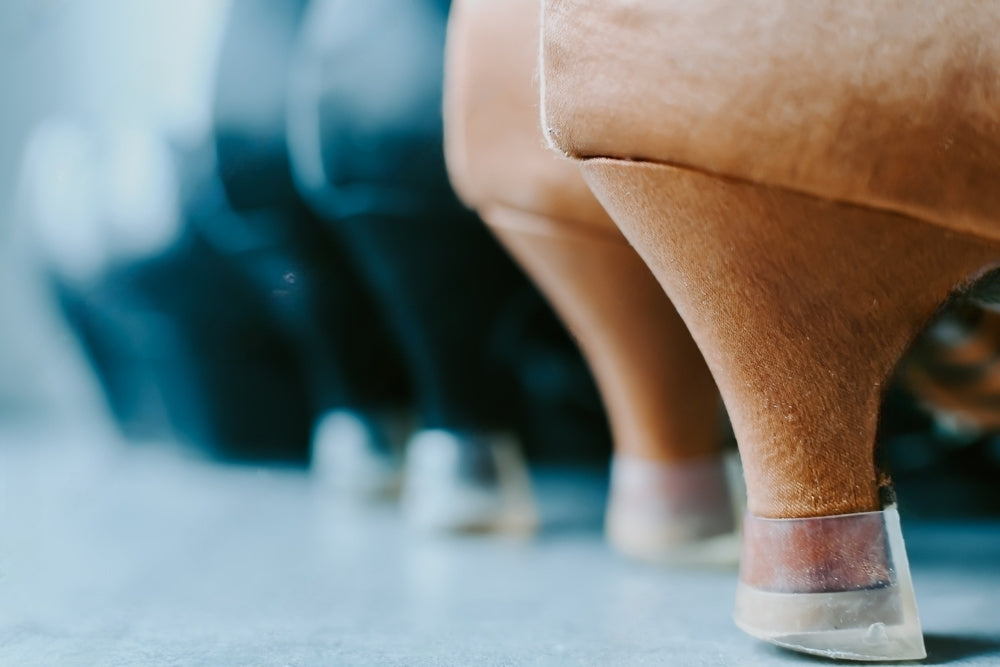
Coefficient of friction - Dance sports at the forefront.
Dancesport transcends the simple execution of choreographed movements. It requires a perfect fusion of technique, elegance and dynamism. At the heart of this fusion, the coefficient of friction of dance shoes becomes a crucial element, dictating the fluidity of the steps and the confidence of the dancers on the floor.
Let's start with a definition : A shoe's coefficient of friction represents the amount of friction between the sole of the shoe and the surface you walk on. It is usually measured as the ratio of the frictional force between the shoe and the surface to the weight of the person wearing the shoes
The Importance of the Coefficient of Friction in DanceSport
In the demanding context of dance sport, the coefficient of friction becomes a key variable to maximize performance. The combination of rapid movements, complex pivots and changes of direction requires precise grip to prevent unwanted slipping while still allowing fluid mobility.
Variable Surfaces, Adaptive Needs
Dancesport competitions take place on a variety of surfaces, from polished wooden floors to rough parquet floors. Dancers must adjust the coefficient of friction of their shoes depending on the surface to maintain the balance between grip and sliding. Soles in suede, leather or with specific inserts offer solutions adapted to these variations.
Details Make the Difference
1. Motion Sensitivity: Dancesport shoes are designed with motion sensitivity, allowing dancers to feel the surface while maintaining full control.
2. Brushed or Polished Soles: Some dancers prefer brushed soles for maximum grip, while others opt for polished soles for easier sliding during certain figures.
3. Support and Stability: A suitable coefficient of friction also contributes to support and stability, allowing dancers to focus on their performance rather than preventing slippage.
The Right Balance = Optimal Safety
Finding the right balance of coefficient of friction becomes an art in itself in the world of dance sports. Experienced dancers seek to balance the grip needed for precise movements with a dose of slip for dynamic choreography.
Changing the coefficient of friction of dancesport shoes can have a significant impact on the dancer's performance and comfort. Here are some suggestions for adjusting the coefficient of friction:
1. Change the soles: The soles of dancesport shoes are often made of different materials, such as leather, suede or rubber. Choosing soles with a different material can influence the coefficient of friction. For example, suede soles generally have higher friction than leather ones.
2. Use specific products: There are products designed to modify the friction of dance shoe soles. Some are sprays or creams applied to the soles to make them more slippery or less slippery, depending on the dancer's needs. However, at BDF we do not recommend these products because they damage your soles prematurely.
3. Powders and talcum powders: Some dancers use talcum powder or special powders to adjust the friction of their shoes. This can be applied directly to the soles to make them more slippery.
4. Brush the soles: Regularly brushing the soles with a maintenance brush can slightly change the texture of the surface, thus influencing friction. However, this must be done carefully so as not to damage the shoes.
It is important to note that adjusting the shoe's coefficient of friction can impact the dancer's safety. Too extreme adjustments can make movements unstable. It is recommended to proceed with caution and experiment gradually to find the optimal friction level.

Leave a comment
This site is protected by hCaptcha and the hCaptcha Privacy Policy and Terms of Service apply.